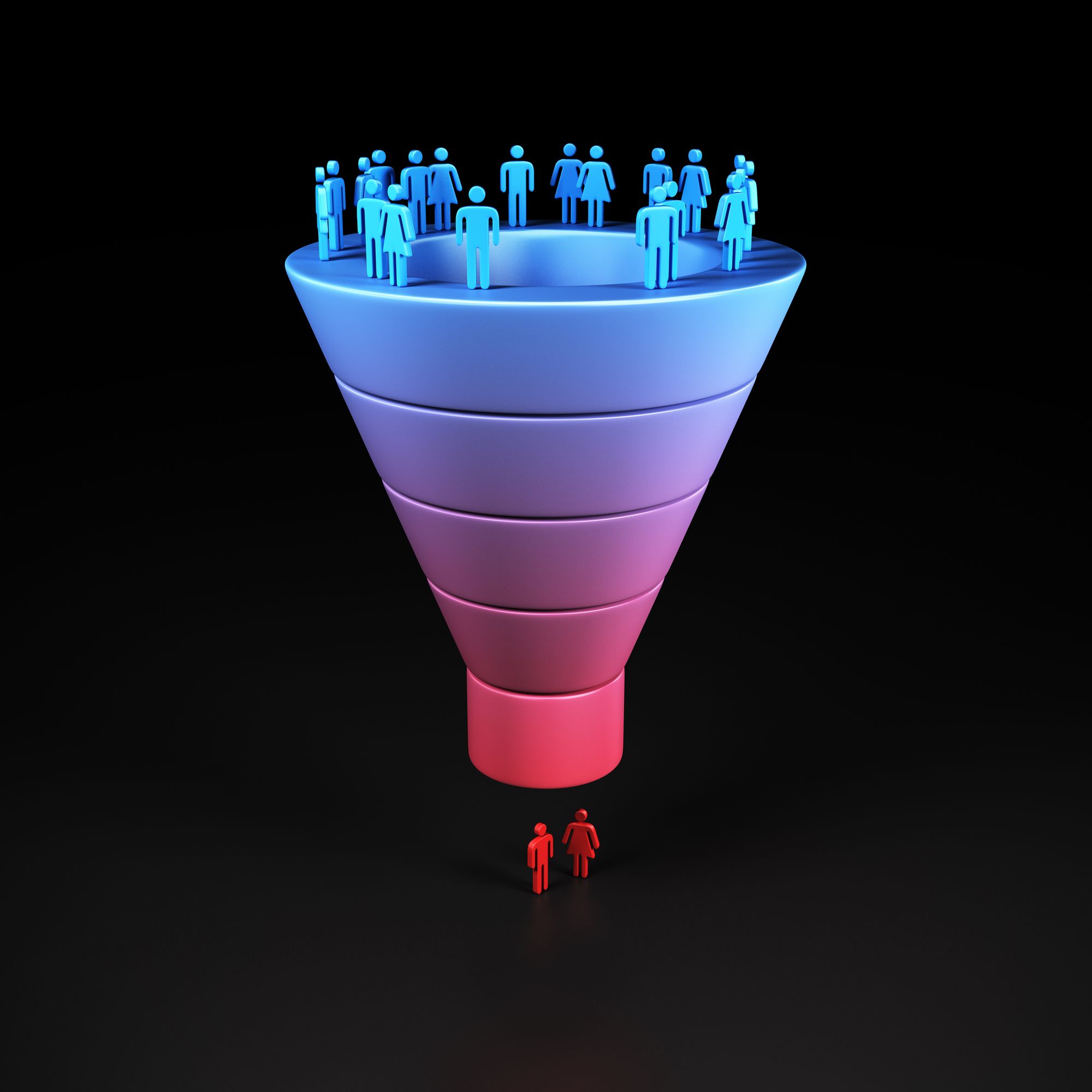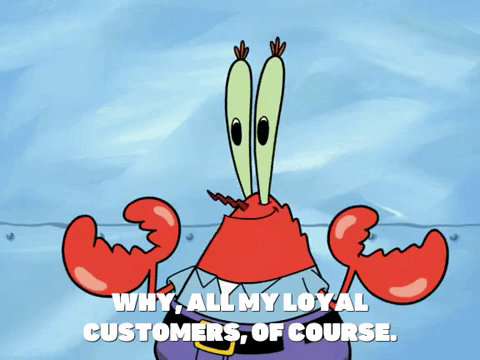How to Build an Email Marketing Funnel in 2025 (11 Steps)
You’ve undoubtedly got a great email marketing strategy, but you’ll need an email marketing funnel if you want to get those conversions.
An email marketing funnel is integral to delivering the right content to the right people at the right time, so you can’t overstate its value.
Perhaps you’re confused about an email marketing funnel and would love a better grasp of the concept.
And you definitely want to learn how to craft an effective one.
Otherwise, why bother?
In any event, you’ve come to the right place for answers.
What is an Email Marketing Funnel?
An email marketing funnel is a representation of your customer journey.
And it informs a series of automated emails designed to guide a potential customer through the process of becoming a loyal customer.
The funnel typically starts with an email introducing the business and its products or services.
Next comes emails offering more information, special deals or discounts, and other incentives to encourage the potential customer to make a purchase.
As the potential customer moves through the sales funnel, the emails they receive become more targeted and personalized, with the ultimate goal of converting them into a paying customer.
An email marketing funnel streamlines the customer journey by providing personalized, relevant content at each stage, building brand trust, and nurturing customer relationships.
Marketing automation can save businesses time and resources so they can focus on other aspects of their digital marketing strategy.
Benefits of an Email Marketing Funnel
1. It Streamlines the Customer Journey
The customer journey is the process a customer goes through when interacting with a brand—starting from when they first become aware of your brand to when they make a purchase.

An email sequence is an essential part of the customer journey because it allows businesses to engage with potential customers at every stage, from awareness to purchase and beyond.
With a well-structured and data-backed email funnel, you quickly move leads through your marketing funnel with relevant and timely content.
This allows you to build trust and credibility with potential customers and subscribers, which increases the chances of them making a purchase.
2. Great Opportunity for Personalization
Personalization in email marketing is crucial because it helps you improve your emails' relevance and effectiveness.
By personalizing the content of your emails, you make your messages more relevant to an individual email subscriber, which increases the chances of your emails being opened, read, and acted upon.
With personalization, you also create more digital engagement and a personalized customer experience.
This shows that you understand the needs and preferences of your customers and are willing to go the extra mile to provide them with a high-quality experience.
There are several methods you can explore to personalize your emails, including:
- Using subscribers’ names in the subject line or the body of the email
- Segmenting your email list based on customer or behavioral characteristics
- Using data from previous interactions with the customer to tailor the content of the email
3. Better Customer Engagement
Keeping leads engaged will ensure they don’t easily fall out of your sales funnel.

And a solid customer engagement plan drives a better experience and encourages brand loyalty and referrals.
A well-crafted email funnel will distribute relevant and valuable content your audience will love and engage with.
This way, you stay top of mind by driving sales through tailored offers.
4. It’s Measurable
Email marketing funnels help you track your emails' performance through metrics such as open rates, click-through rates, and conversion rates.
This assists you in understanding what is working well and what can be improved, so you can optimize your email marketing strategy and achieve your goals.
Beyond micro-level analytics, email marketing funnels also give general insights into your ROI, which helps you justify your investment in marketing analytics tools.
Plus, such data helps restructure your marketing budget for maximum impact.
Email Marketing Funnel Stages

Think of these stages as the phases in the customer journey that your email sales funnel needs to cater to.
1. Awareness
This is the first stage in the customer journey and, as a result, the first stage in an email marketing funnel.
At this point, leads become aware of your product or service and have a superficial understanding of what you do.
Relevant content for leads at this stage would explore your subscribers’ pain points, the general features of your product or service, and how they can solve their problems.
2. Engagement
In this stage, the goal is to build trust and increase user engagement with potential customers by providing valuable content and establishing the brand as an authority in its field.
This can be done through a series of emails containing educational content, tips, advice, or other content that will interest the potential customer.
3. Consideration
Here’s where leads weigh their options and consider which solution to go for.
You want your emails to double down on your value proposition.
This means you’ll engage your email subscribers with messages highlighting your product or service’s unique features and differentiators.
4. Purchase
In this stage, the goal is to promote specific offers and incentives to encourage potential customers to purchase.
This can be done through emails that contain discount codes, limited-time offers, or other types of promotions that will be attractive to the potential customer.
5. Adoption
At this point, you’d be dealing with leads who have now become customers.
Your goal should be pushing out content to help them get the best out of your product or service.
The idea is to focus on key actions they need to take that will deliver value from your solution.
So roll out product-focused tips, how-tos, and more.
6. Retention and Loyalty
People at the retention stage have already done business with you at least once.
This means they are very familiar with your brand and might already be fans of your solution if it surpasses expectations.

You want to stay in touch with this group of subscribers and drive customer retention using valuable content that seeks to solidify your relationship and create loyal customers.
7. Expansion
As you relate with current customers and try to retain them, don’t stop there.
Also, attempt to learn how you could serve them better or make your offering or interactions more valuable to them.
This will ensure that you get accurate data on what you need to improve, roll out, or take away to keep your customers satisfied.
8. Advocacy
Your next point of call should be encouraging current customers to get the word out about your business.
You don’t have to settle for run-of-the-mill calls for referrals; instead, get creative and introduce exciting campaigns that will encourage your customers to be willing brand advocates.
How to Build an Email Marketing Funnel
1. Create a customer journey map
A customer journey map is a visual representation of a customer's experiences and interactions with a company over time.
To create a customer journey map for email marketing, follow these steps:
- Identify the critical stages of the customer journey, such as awareness, consideration, and decision.
- For each customer journey stage, identify the specific touchpoints a customer might have with your company through email marketing. These could include emails introducing your company and its products, emails providing more information about particular products, and emails encouraging customers to purchase.
- For each touchpoint, consider the customer's perspective and goals at that stage of their journey. For example, at the awareness stage, a customer might want to learn more about your company and its products. At the consideration stage, they might compare your products to your competitors.
- Create a visual representation of the customer journey that includes all key stages and touchpoints. This could be a simple flowchart or a more detailed diagram showing the various interactions and experiences a customer might have with your company through email marketing.
- Use the customer journey map to identify any gaps or opportunities for improvement in your email marketing strategy. For example, you might need help finding holes in your email content or that specific touchpoints are less effective than you would like.
- Use the customer journey map to guide the development of your email marketing strategy. This will help you to create a more cohesive and effective campaign that resonates with customers and helps to guide them through the various stages of their journey.
2. Analyze and segment your target audience
To analyze and segment your target audience for email marketing, use marketing segmentation to collect data on your current and potential customers.

This could include demographic segmentation, such as age, gender, geographic location, interests, preferences, and past behavior.
Use this data to build buyer personas that will help you to understand the needs and motivations of different segments of your audience.
Once you understand your audience, use this information to segment them into different groups based on common characteristics or behaviors.
Then use the insights from each customer behavior analysis to create a targeted email marketing campaign tailored to each group's specific needs and interests.
This will help you to make more relevant and compelling email content and also help measure the success of your targeted emails by comparing the performance of different segments.
To further analyze and segment your audience, use tools and techniques such as A/B testing, surveys, and customer feedback to gather more detailed information.
This will help refine your segmentation and create more targeted and effective email marketing campaigns.
3. Generate leads
Next up, you want to start pulling in prospects, and there are several ways to do this.
Here are a few ideas to consider:
- Create a sign-up form on your website where visitors enter their email addresses to receive updates and promotions.
- Use social media to promote your email list and encourage followers to sign up.
- Partner with other companies or organizations to cross-promote each other's email lists.
- Attend conferences, trade shows, and other events where you can collect business cards and add the people you meet to your email list.
- Use content marketing to provide valuable information and resources to your audience and drive brand awareness. Also, include a call-to-action in your blog posts, videos, and other content to encourage people to sign up for your email list.
- Use lead magnets, such as free ebooks, guides, or webinars, to entice people to give you their email addresses.
- Use retargeting ads to reach people who have visited your website but still need to sign up for your email list.
⚠️ It's important to only add people to your email list who have explicitly permitted you to contact them to avoid spam complaints!
4. Use opt-in forms
An opt-in form is a way for people to sign up to receive emails from you.
Customize your form to align with your brand aesthetics and choose what information you require leads to input.
Your form could ask potential subscribers to enter their names and email addresses or need more details such as location, phone number, etc.
Add the form to your website and set up an email confirmation process that requires subscribers who opt into your email list to confirm their subscriptions.
Then test the entire process to make sure it works.
Promote your opt-in form on your website and other channels with clear calls to action, pop-ups, and more.
5. Choose your email marketing software
Selecting the right email marketing software will help you manage your email marketing funnel seamlessly.
When scouting email marketing software, look out for options that:
- Are easy to use and customize
- Offer bulk emails
- Allow segmentation
- Provide comprehensive analytics and reports
- Integrate with your CRM sotware
6. Incentivize leads with a lead magnet
A lead magnet is a free resource offered to people in exchange for their email addresses. You’ll need quality lead magnets to build your email list.

To create a lead magnet that would attract your target audience, start by identifying the needs and interests of your audience.
Then create a resource that appeals to either your audience’s interests or seeks to solve specific pain points.
Next, ensure that people can find the resource.
Offer it via a sign-up form on your website or create a dedicated landing page for the lead magnet.
Either way, ensure you demand users’ email addresses in exchange for the resource.
7. Build a landing page
Build standalone landing pages dedicated to collecting email addresses from your audience.
To build an effective landing page for this purpose, follow these best practices:
- Create a clear and compelling headline describing your landing page's value proposition. This should be concise and attention-grabbing and clearly communicate the benefit of signing up for your email list.
- Use engaging images and videos to capture your audience's attention and communicate your message visually.
- Create a form that collects the information you need from the person signing up for your email list. This could include their name, email address, and other relevant details.
- Use compelling copy to explain the value of signing up for your email list, and include social proof and testimonials to build trust and credibility.
- Include a clear and prominent call to action encouraging prospects to sign up for your email list. This could be a button or a link, which should be easy to find and click.
- Optimize the landing page for search engines by including keywords and meta descriptions, and use A/B testing to improve the page's performance.
- Promote the landing page to your audience using email marketing, social media, and other digital marketing channels to drive traffic to the page and capture leads.
- Optimize for mobile marketing by building a mobile landing page.
8. Start with an introductory email
Think of introductory emails as ice-breakers that will help kickstart the conversation with your new subscribers without overwhelming them.

Such sequences should include a welcome email to give subscribers an idea of who you are and what they can expect.
An introductory email aims to engage your audience and encourage them to take further action, such as visiting your website, exploring your product, or accessing certain free resources.
Keep your email concise, relevant, and compelling, and include a clear call to action to encourage people to take the next step.
9. Use a drip campaign
A drip email campaign is a series of automated emails sent to subscribers over time based on a pre-defined schedule or trigger.
Drip campaigns are often used to nurture leads and guide them through the sales funnel by providing them with relevant, valuable content at each stage of their journey.
Drip campaigns can be very effective for email marketing, as they allow you to automate much of the process and tailor the content to your audience's specific needs and interests.
Providing relevant, valuable content at each stage of the customer journey, triggered emails, or drip campaigns can help build trust and credibility and convert leads into customers.
To use email drip campaigns, follow these steps:
Identify the goals of your drip campaign, such as building relationships with leads, educating them about your products or services, or encouraging them to take specific actions.
- Identify the critical stages of the customer journey that your drip campaign will target, such as awareness, consideration, and decision.
- Create a series of emails tailored to your audience's needs and interests at each stage of the customer journey. These emails should provide value and relevance to the person and include a clear call to action that encourages the person to take the next step.
- Set up triggers for each email in the drip campaign. You could base these triggers on events, such as signing up for a newsletter, visiting a website, or making a purchase, or they could be based on a pre-defined schedule, such as sending an email one day after a person signs up for your email list.
- Test and optimize the drip campaign to ensure it delivers the intended results. This could include testing different email content, calls-to-action, and trigger events to see what works best for your audience.
- Monitor and analyze the performance of the drip campaign to identify any areas for improvement and make adjustments as needed to improve its effectiveness.
10. Don’t lose touch with your current customers
You also need a plan to cater to your current customers because retaining an existing customer is far more affordable than gaining a new one.
Map out a strategy for engaging people who have already done business with you or are still doing so.
Keep them abreast of company and product updates.
Share new deals and offers they might be interested in to drive customer loyalty and repeat purchases; try cross-selling and upselling too.
The trick at this point is to understand your customers well enough to know what is interesting and relevant to them.
Then create content around these areas, and distribute it via email and social media.
11. Track email marketing analytics
Metrics are everything, so you must consider the most important ones.
This way, you’d be able to measure the success of your campaigns, figure out what’s working and what’s not and identify changes you might need to make to get better results.
Here are some of the most important email marketing analytics you need to track:
- Open rate
- Click-through rate
- Conversion rate
- Bounce rate
- Return-on-investment (ROI)
- Unsubscribe rate
- List growth rate
- Click-to-open rate
- Delivery rate
Tips for Optimizing Email Marketing Funnels
1. Keep the focus on your business goals
Ultimately, you’re creating a marketing funnel to get positive results for your business.
So map out your business goals from the get-go and design your email marketing funnel to drive customer action that will help you achieve those goals.
Review your results often to understand how well you’re doing and identify areas where you need to improve.
2. Personalize the heck out of your funnel
The value of email marketing funnels lies in their relevance to your target audience.
This means email funnels should be hyper-tailored to the journey of your target audience.
That’s the only way you can create content that will be relevant to them and will drive profitable customer action.
3. Focus on quality (not quantity)
Prioritize relevance and value above quantity when designing your email marketing funnel and workflow.
The trick is always to create content your audience will find helpful and then share it with the frequency they’re comfortable with.
Remember, your emails are no good if they end up putting your audience off and driving unsubscribes and low open or conversion rates.
Set Yourself Up for Email Marketing Success
Laying the groundwork for your email marketing efforts by creating an email marketing funnel is the smart play.
It will give you structure, organization, a clear sense of direction, and a better chance of succeeding at email marketing.
Creating your funnel might feel like a lot, so take it one step at a time.
Carefully follow the tips we’ve outlined in our complete guide; you should be fine.
Dozie Anyaegbunam is a B2B content writer and strategist. A Cannes Lions certified storyteller, Dozie has crafted compelling content for brands such as Mirasee, SmartBlogger, Growth Mentor, and more. He's also Dodo and Ronan's dad, a proud flâneur, and a Felix Baumgartner wannabe. Don't miss his podcast, The Newcomers, where he interviews immigrants about the struggles and lessons that come with starting life in a new country.